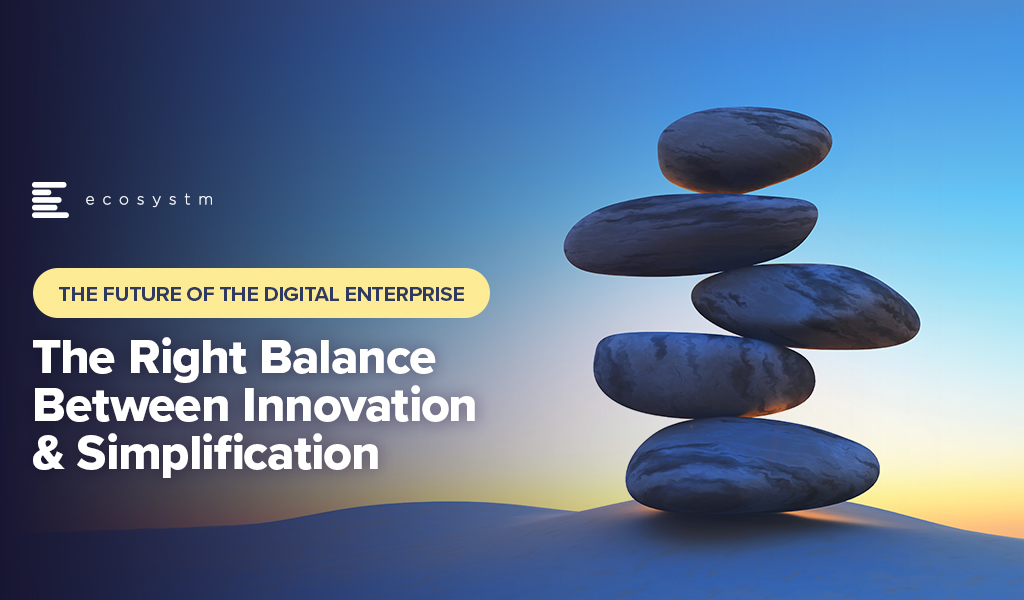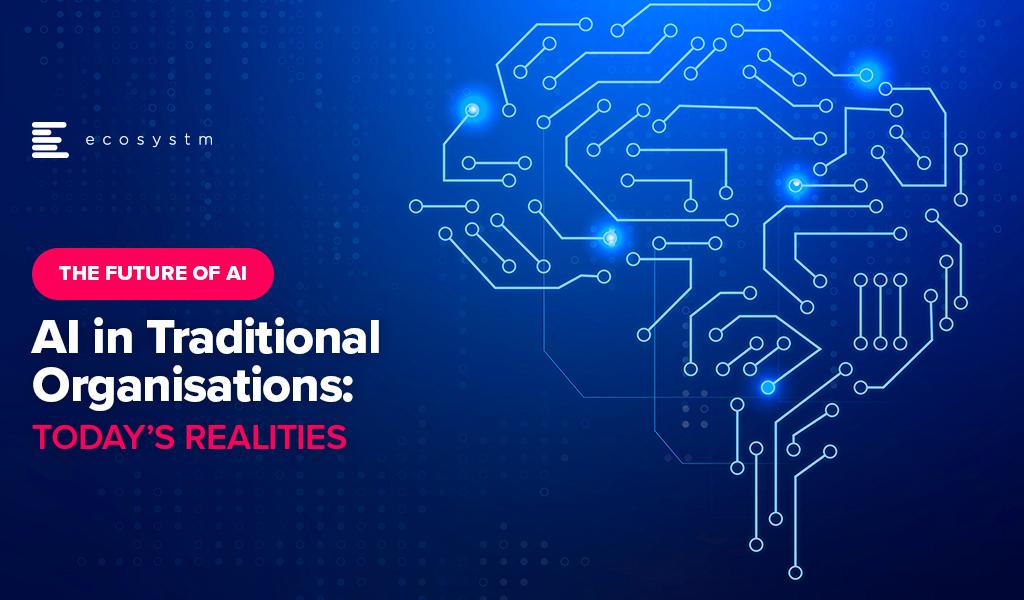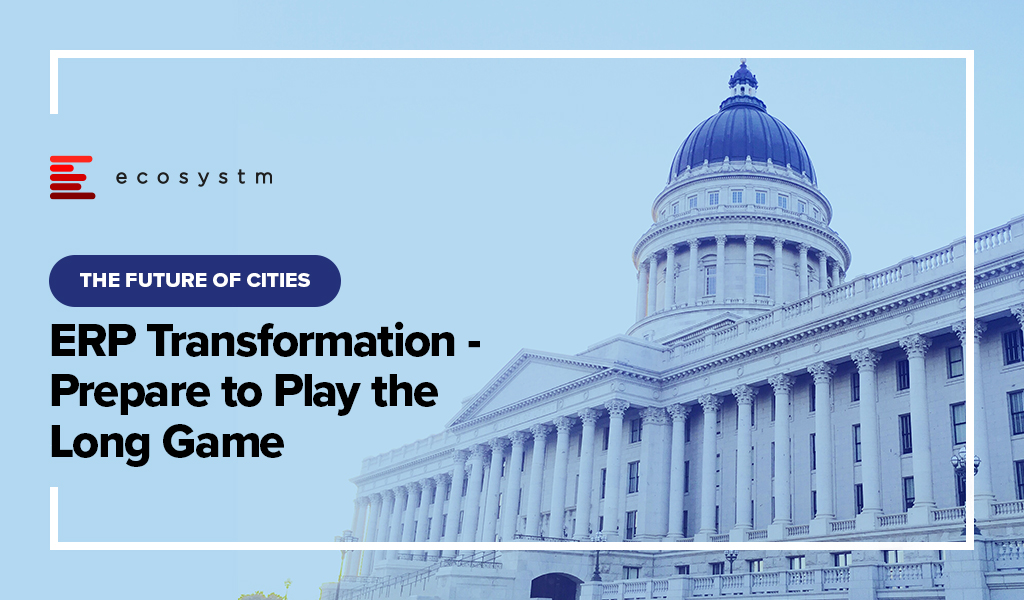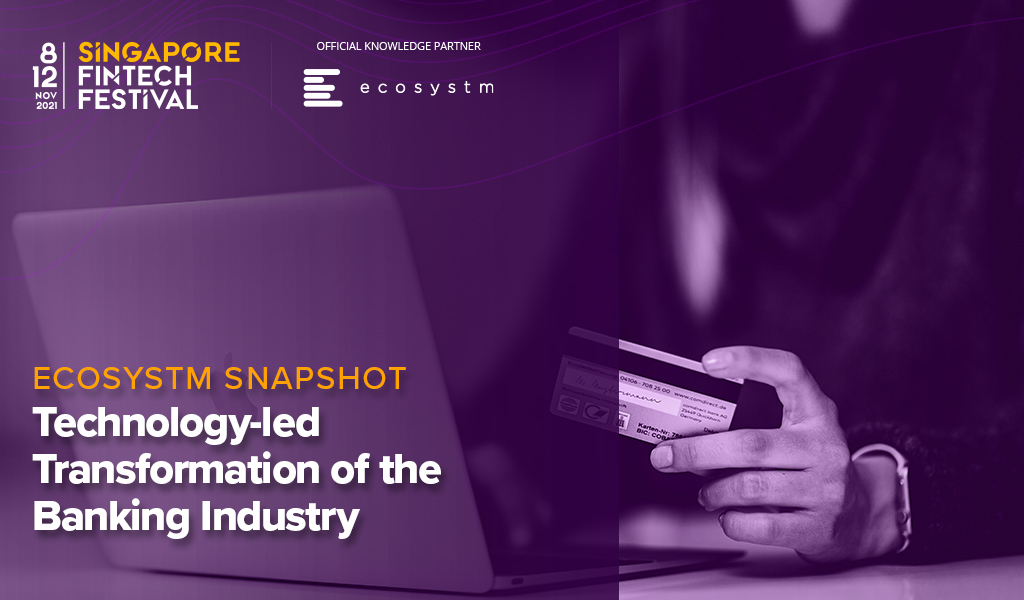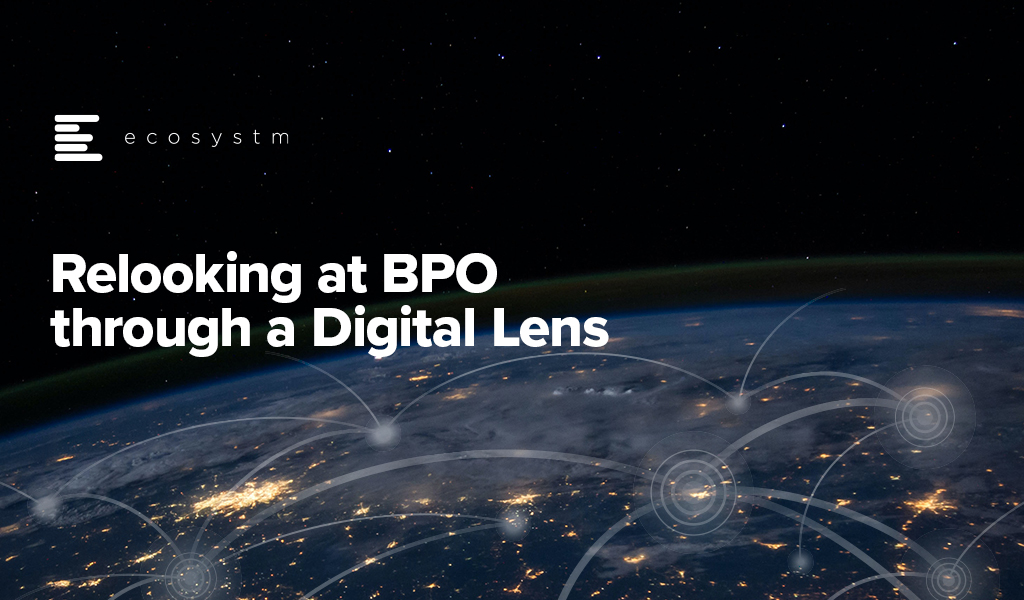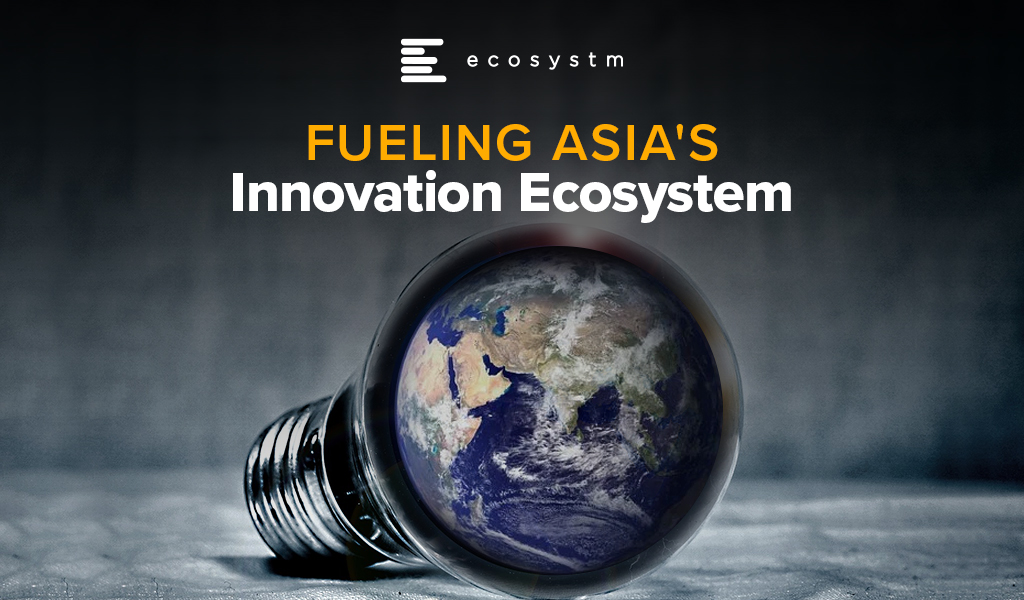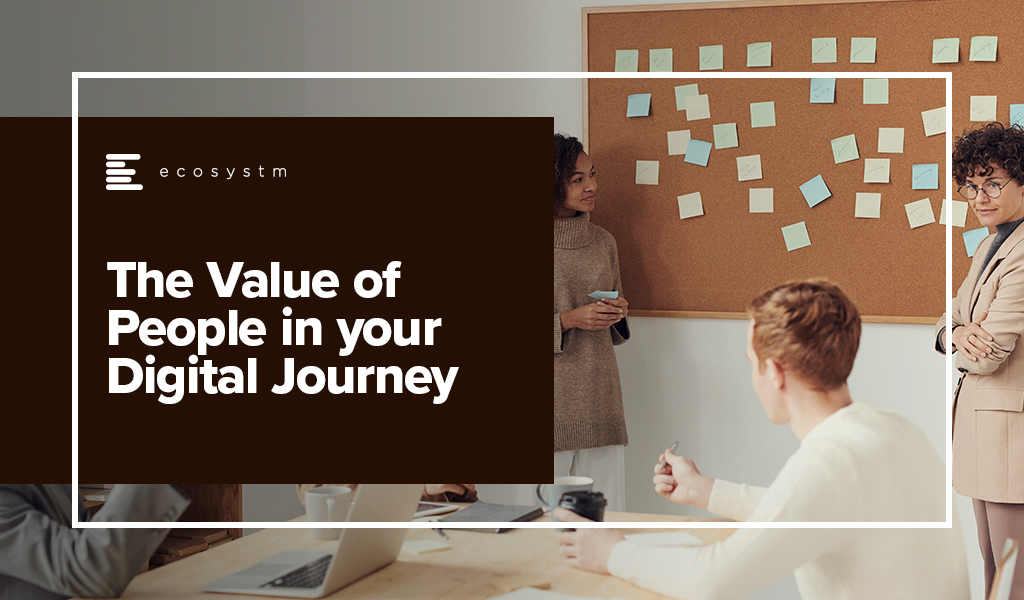Life never gets any easier for the digital and information technology teams in organisations. The range and reach of the different technologies continue to open new opportunities for organisations that have the foresight and strategy to chase them. Improving offers for existing customers and reaching new segments depend on the organisation’s ability to innovate.
But the complexity of the digital ecosystem means this ability to innovate will be heavily constrained, causing improvements to take longer and cost more in many cases. Addressing the top business priorities expressed in the Ecosystm Digital Enterprise Study, 2022, will need tech teams to look to simplify as well as add features.
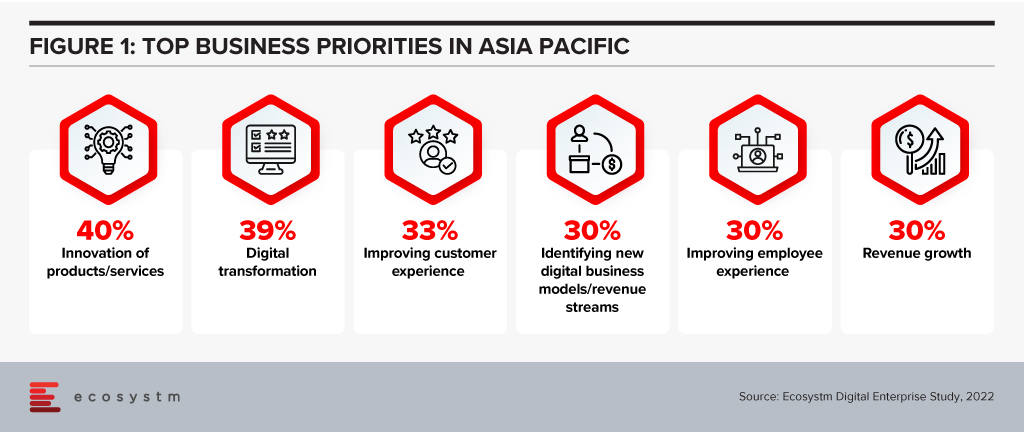
Complexity is Not Just an IT Issue
Many parts of an organisation have been making decisions on implementing new digital capabilities, particularly those involved in remote working. Frequently, the IT organisation has not been involved in the selection, implementation and use of these new facilities.
The number of start-up organisations delivering SaaS has continued to explode. A particular area has been the expansion of co-creation tools used by teams to deliver outcomes. In many cases, these have been introduced by enthusiastic users looking to improve their immediate working environment without the understanding of single-sign-on requirements, security and privacy of information or the importance of backup and business continuity planning.
SaaS tools such as Notion, monday.com and ClickUp (amongst many, many others), are being used to coordinate and manage teams across organisations of all sizes. While these are all cloud services, the support and maintenance of them ultimately will fall to the IT organisation. And they won’t be integrated at all with the tools the IT organisation uses to manage and improve user experience.
Every new component adds to the complexity of the tech environment – but with that complexity comes increased dependencies between components, which slows an organisation’s ability to adapt and evolve. This means each change needs more work to deliver, costs increase, and it takes longer to deliver value.
And this increasing complexity causes further problems with cybersecurity. Without regular attention, legacy systems will increase the attack surface of organisations, making it easier to compromise an organisation’s environment. At a recent executive forum with CISOs, attendees rated the risks caused by their legacy systems as their most significant concern.
An organisation’s leadership needs to both simplify and advance their organisation’s digital capabilities to remain competitive. This balance should not be left to the IT organisation to achieve as they will not be able to deliver both without wider support and recognition of the problems.
Discriminate on Differentiating Skills
One thing we can be sure of is that we won’t be able to employ all the skills we need for our future capabilities. We are not training enough people in the skills that we need now and for the future, and the range of technologies continues to expand, increasing the number of skills that we will need to keep an organisation running.
Most organisations are not removing or replacing ageing systems, preferring to keep them running at an apparently low cost. Often these legacy systems are fully depreciated, have low maintenance costs and have few changes made to them, as other areas of the organisation offer better investment options. But this also means that the old skills remain necessary.
So organisational leaders are adding new skills requirements on top of old, with the older skills being less attractive with so many new languages, frameworks and databases becoming available. Wikipedia has a very long list of languages that have been developed over the years. Some from the 1950s, like FORTRAN and LISP, continue to be used today.
Organisations will not be in a position to employ all the skills it needs to implement, develop and maintain for its digital infrastructure and applications. The choice is going to be which skills are most important to an organisation. This selection needs to be very discriminating and focus on differentiating skills – those that really make a difference within your ecosystem, particularly for your customers and employees.
Organisations will need a great partner who can deliver generic skills and more services. They will have better economies of scale and skill and will free management to attend to those things most important to customers and employees.
Hybrid Cloud has an Edge
Almost every organisation has a hybrid cloud environment. This is not a projection – it has already happened. And most organisations are not well equipped to deal with this situation.
Organisations may not be aware that they are using multiple public clouds. Many of the niche SaaS applications used by an organisation will use Microsoft Azure, AWS or GCP, so it is highly likely organisations are already using multiple public clouds. Not to mention the offerings from vendors such as Oracle, Salesforce, SAP and IBM. IT teams need to be able to monitor, manage and maintain this complex set of environments. But we are only in the early stages of integrating these different services and systems.
But there is a third leg to this digital infrastructure stool that is becoming increasingly important – what we call “the Edge” – where applications are deployed as part of the sensors that collect data in different environments. This includes applications such as pattern recognition systems embedded in cameras so that network and server delays cannot affect the performance of the edge systems. We can see this happening even in our homes. Google supports their Nest domestic products, while Alexa uses AWS. Not to mention Amazon’s Ring home security products.
With the sheer number of these edge devices that already exist, the complexity it adds to the hybrid environment is huge. And we expect IT organisations to be able to support and manage these.
Simplify, Specialise, Scale
The lessons for IT organisations are threefold:
- Simplify as much as possible while you are implementing new features and facilities. Retiring legacy infrastructure elements should be consistently included in the IT Team objectives. This should be done as part of implementing new capabilities in areas that are related to the legacy.
- Specialise in the skills that are the differentiators for your organisation with its customers and employees. Find great partners who can provide the more generic skills and services to take this load off your team.
- Scale your hybrid management environment so that you can automate as much of the running of your infrastructure as possible. You need to make your IT Team as productive as possible, and they will need power tools.
For IT vendors, the lessons are similar.
- Simplify customer offers as much as possible so that integration with your offering is fast and frugal. Work with them to reduce and retire as much of their legacy as possible as you implement your services. Duplication of even part of your offer will complicate your delivery of high-quality services.
- Understand where your customers have chosen to specialise and look to complement their skills. And consistently demonstrate that you are the best in delivering these generic capabilities.
- Scale your integration capabilities so that your customers can operate through that mythical single pane of glass. They will be struggling with the complexities of the hybrid infrastructure that include multiple cloud vendors, on-premises equipment, and edge services.

–
In this Insight, guest author Anirban Mukherjee lists out the key challenges of AI adoption in traditional organisations – and how best to mitigate these challenges. “I am by no means suggesting that traditional companies avoid or delay adopting AI. That would be akin to asking a factory to keep using only steam as power, even as electrification came in during early 20th century! But organisations need to have a pragmatic strategy around what will undoubtedly be a big, but necessary, transition.”

After years of evangelising digital adoption, I have more of a nuanced stance today – supporting a prudent strategy, especially where the organisation’s internal capabilities/technology maturity is in question. I still see many traditional organisations burning budgets in AI adoption programs with low success rates, simply because of poor choices driven by misplaced expectations. Without going into the obvious reasons for over-exuberance (media-hype, mis-selling, FOMO, irrational valuations – the list goes on), here are few patterns that can be detected in those organisations that have succeeded getting value – and gloriously so!
Data-driven decision-making is a cultural change. Most traditional organisations have a point person/role accountable for any important decision, whose “neck is on the line”. For these organisations to change over to trusting AI decisions (with its characteristic opacity, and stochastic nature of recommendations) is often a leap too far.
Work on your change management, but more crucially, strategically choose business/process decision points (aka use-cases) to acceptably AI-enable.
Technical choice of ML modeling needs business judgement too. The more flexible non-linear models that increase prediction accuracy, invariably suffer from lower interpretability – and may be a poor choice in many business contexts. Depending upon business data volumes and accuracy, model bias-variance tradeoffs need to be made. Assessing model accuracy and its thresholds (false-positive-false-negative trade-offs) are similarly nuanced. All this implies that organisation’s domain knowledge needs to merge well with data science design. A pragmatic approach would be to not try to be cutting-edge.
Look to use proven foundational model-platforms – such as those for NLP, visual analytics – for first use cases. Also note that not every problem needs AI; a lot can be sorted through traditional programming (“if-then automation”) and should be. The dirty secret of the industry is that the power of a lot of products marketed as “AI-powered” is mostly traditional logic, under the hood!
In getting results from AI, most often “better data trumps better models”. Practically, this means that organisations need to spend more on data engineering effort, than on data science effort. The CDO/CIO organisation needs to build the right balance of data competencies and tools.
Get the data readiness programs started – yesterday! While the focus of data scientists is often on training an AI model, deployment of the trained model online is a whole other level of technical challenge (particularly when it comes to IT-OT and real-time integrations).
It takes time to adopt AI in traditional organisations. Building up training data and model accuracy is a slow process. Organisational changes take time – and then you have to add considerations such as data standardisation; hygiene and integration programs; and the new attention required to build capabilities in AIOps, AI adoption and governance.
Typically plan for 3 years – monitor progress and steer every 6 months. Be ready to kill “zombie” projects along the way. Train the executive team – not to code, but to understand the technology’s capabilities and limitations. This will ensure better informed buyers/consumers and help drive adoption within the organisation.
I am by no means suggesting that traditional companies avoid or delay adopting AI. That would be akin to asking a factory to keep using only steam as power, even as electrification came in during early 20th century! But organisations need to have a pragmatic strategy around what will undoubtedly be a big, but necessary, transition.
These opinions are personal (and may change with time), but definitely informed through a decade of involvement in such journeys. It is not too early for any organisation to start – results are beginning to show for those who started earlier, and we know what they got right (and wrong).
I would love to hear your views, or even engage with you on your journey!
The views and opinions mentioned in the article are personal.
Anirban Mukherjee has more than 25 years of experience in operations excellence and technology consulting across the globe, having led transformations in Energy, Engineering, and Automotive majors. Over the last decade, he has focused on Smart Manufacturing/Industry 4.0 solutions that integrate cutting-edge digital into existing operations.

It is an incredible time of change for the city and regional governments where every strategic activity – especially in these globally challenging times – presents a significant opportunity for transformation. To continue to meet the changing needs of the communities they serve, every modern city government’s technology story is a work in progress. While this is the mantra for successful continuous improvement it also describes the best strategic approach for how municipalities should manage their corporate application replacement programs.
Unfortunately, significant systems upgrade and replacement programs are regularly approached as complex, multi-tasking activities that have a hard start, a defined program, and a date-stamped end. In taking this traditional project implementation approach, intuitively, many organisations believe that doing as much as possible, in as quick a time as possible, ultimately helps to achieve twice as much within the same time. The result is more likely to be half as much, and at lower levels of quality and enjoyment for all involved. This manifests as project scope creep and budget overruns.
Aside from these big bang approaches, thanks to large implementation costs and stringent regulatory oversight, local governments are also forced to think upfront about the potential future value created by a significant core system technology change. The pressure of moving at high speed, and with a dominant technology focus, can obscure both the true organisational cost and ultimate value of the program. This mentality prevails even when it is acknowledged that activities associated with a transformation program will eventually usher in a period of significant change – that is not limited to the changing core corporate applications environment itself.
The 4-Part ERP Transformation Trap is All Too Common in City Government
An over-reliance on technology to deliver business transformation outcomes. Local governments everywhere continue to pursue strategic plans that are either wholly defined or implicitly reliant on world-class customer experience (CX), employee experience (EX), and digital transformation (DX) capabilities. Despite these being business-oriented strategies, organisations then pursue an over-reliance on technology – usually winner-take-all ERP led procurements – to achieve them.
Choosing an industry solution focused on the wrong business model. The chance of achieving these digital transformation outcomes is further obscured when the customer is not central to the data model. The core corporate application technology underpinning the sector’s leading ERP programs is largely based on a property-centric model – where the customer is a subordinate attribute of a property, and the property asset defines the business process and individual. It is a challenge for any council to deliver contemporary customer-first digital transformation with a property-centric approach. To realise customer and employee-centric outcomes, councils must therefore rethink their project’s business methodology and ask themselves, “what is our primary focus here?”. This is never more important than when replacing legacy systems.
Inability to realise that a winner-take-all ERP solution is not an architectural choice. ERP is important but it is not everything. The traditional council ERP is just one important part of an overall capability that allows authorities to longitudinally manage the impacts and opportunities of change across their organisation, communities, and stakeholder ecosystems. Having chosen a sector specific ERP solution, city governments realise too late that no single technology vendor has a best-of-breed solution to achieve the desired DX outcomes. That requires a more sophisticated architectural approach.
Failure to acknowledge there is no finish line to transformation. Like many worthwhile activities, the prize in DX is in the journey, not in the cup. While there can be an end to “project scope”, there should be no “end point” for an ERP transformation program. Only once these challenges are acknowledged and accepted, can transformation be assimilated into the organisation to ensure the council is technically capable of delivering the implicit outcome for the organisation. This could simply be defined as ‘a contemporary business approach to managing the money, the assets, the community, the customers, and the staff of regional government.’
A Better Way: Re-Architecting for Project Success
Where opportunities to meet increasing CX and EX demands arise, especially through ERP and corporate application renewal programs, successful projects in contemporary councils require a service-oriented architecture not found in contemporary or legacy ERP systems alone.
Beyond the property-centric challenges already outlined, even contemporary systems and suppliers can be among the least flexible to the changing data management requirements of many organisations which call for significantly more robust data, integration and application friendly infrastructure management environments.
Customer centricity, data management, integration and software infrastructure capabilities must take precedent over an aging view of single-vendor dominance in the city government sector, especially in middle- and back-office functions, which are typically void of true differentiation opportunities and prone to confining organisations to technology-led and locked projects.
Rather than tendering for a single software provider or platform, contemporary city governments must ditch the old approach to procuring a winning ERP vendor and take steps to establish the following Big 5 platform capabilities (Figure 1). And then foster the contemporary workforce to support them.

For several decades now many organisations have attempted to short-circuit the city government ERP challenge. Fundamentally, technology transformation is not possible without technology change. A non-negotiable part of that change is a shift away from the psychology of brand-based procurement towards a new architectural approach which, like all businesses, is adaptable to change over a long period of time.

COVID-19 has been a major disruption for people-intensive industries and the BPO sector is no exception. However, some of the forward-looking BPO organisations are using this disruption as an opportunity to re-evaluate how they do business and how they can make themselves resilient and future-proof. In many of these conversations, technology and process reengineering are emerging as the two common themes in their journey to transform into a New Age BPO provider.
In 2022 BPO providers will focus on mitigating their key challenges around handling client expectations, better people management and investing in the right technologies for their own transformation journeys.
Read on to find out what Ecosystm Advisors Audrey William and Venu Reddy think will be the key trends for the New Age BPO in 2022.
Click here to download Ecosystm Predicts: The Top 5 Trends for the New Age BPO in 2022 as PDF

When the FinTech revolution started, traditional banking felt the heat of competition from the ‘new kid on the block’. FinTechs promised (and often delivered) fast turnarounds and personalised services. Banks were forced to look at their operations through the lens of customer experience, constantly re-evaluating risk exposures to compete with FinTechs.
But traditional banks are giving their ‘neo-competitors’ a run for their money. Many have transformed their core banking for operational efficiency. They have also taken lessons from FinTechs and are actively working on their customer engagements. This Ecosystm Snapshot looks at how banks (such as Standard Chartered Bank, ANZ Bank, Westpac, Commonwealth Bank of Australia, Timo, and Welcome Bank) are investing in tech-led transformation and the ways tech vendors (such as IBM, Temenos, Mambu, TCS and Wipro) are empowering them.
To download this Ecosystm Bytes as a pdf for easier sharing and to access the hyperlinks, please click here.

COVID-19 has been a major disruption for people-intensive industries and the BPO sector is no exception. However, some of the forward-looking BPO organisations are using this disruption as an opportunity to re-evaluate how they do business and how they can make themselves resilient and future-proof. In many of these conversations, technology and process reengineering are emerging as the two common vectors in their journey to transform into a “New Age BPO” company.
Ecosystm research finds that running large, people-intensive centres can have a diverse range of challenges (Figure 1).

The transformation must address the top three pain points that have been plaguing the BPO industry:
- Staff scheduling and growing cost due to resource shortage in metro cities
- Managing physical and IT security with data security and industry best practices in mind
- Work/performance metrics that drive cost pressure and minimise differentiation
The New Age BPO
The wave of movement of the BPO centres away from expensive metro locations to tier 2 and tier 3 towns will now become even more significant – across all countries. This will enable BPOs to tap into a larger resources pool and at a much lower cost to the business. This will mean investments in process re-engineering and technology. But, before this journey starts, it is very important for these organisations to reimagine themselves in the context of value and differentiation – and it can no longer just be “I can do it faster and cheaper”!
Becoming a New Age BPO will mean replacing the traditional mindset of ferrying a large number of employees to the office around 24-hour shifts, by technology-enabled processes. Technology will enable these organisations to be a lot more agile, put the same (or better) safeguards on data and privacy, and drive better work efficiency.
For this transformation to happen, it is important for the BPO organisation to not just bounce back to what they have been used to, but should show a willingness to “bounce forward”, as my colleague Tim Sheedy puts it. This means that they take this disruption as an opportunity to relook at their staffing plans, business processes, and customer engagement – and leverage the right technologies to address areas of improvement in all three fronts. At the same time, technology adoption should not be done in silos. The comprehensive technology adoption plan must be designed to address all three areas (staffing, process, and customer engagement) simultaneously. The technology should also be architected to be scalable (by geography and staff levels) and allow better manageability in terms of real-time reporting and work allocation.
It will be a fine balance. But the good news is that the technology is not only available to address these areas but is also mature enough to be cost-effective. Of course, this will require the organisation to view technology as a strategic investment.
Another aspect of technology-led transformation that will benefit BPO organisations is the transparency that technology can provide and the opportunity to build better trust. This will be driven by full visibility of what is actually happening and the ability to provide real-time progress reports on issues raised. This means that quarterly site visits by clients to “show and tell” can be avoided. The discussions can be about specific points of interest and improvement rather than the “feel good factors” that these visits usually provide.
So, in many ways COVID-19 has accelerated the evolution of the “New Age BPO sector” and the intersection of this wave with the digital transformation wave will have a positive long-term impact on the BPO sectors in popular destinations such as India, the Philippines, Brazil, Mexico and others across the world.
Without this transformation, BPO organisations will keep pushing themselves into a tight corner and eventually be replaced by nimble and technology-savvy competitors that are focused on process and industry differentiation.

Digital and IT organisations are going through some dramatic changes as they adopt cloud and as-a-service capabilities. In this post, I want to write about two of these – one that is very much a consequence of the other.
Contract Numbers are Exploding
We’re seeing an explosion in the number of IT suppliers to a typical organisation.
Pre-cloud, the typical organisation probably had five to ten contracts that covered most of the external services that were in use. With suppliers increasingly providing niche functionality and the increased use of credit cards to buy external services, it is often difficult to determine exactly how many contracts are in place. Or, indeed, have a clear understanding of the terms and conditions of each of these contracts.
Where once an organisation might have had contracts for an on-premises ERP and CRM system, a typical organisation will still have those contracts as well as a supply chain forecasting service, a marketing email management tool, not to mention online spreadsheets and task management capabilities.
So with many more contracts in place, the complexity of managing these contracts and understanding the technical, legal and business risks encapsulated in these contracts has become dramatically more difficult.
I’ll return to this point in a later post, as most organisations struggle with this increasing complexity.
What Is Happening to Your People?
The existence of these contracts means that you are increasingly becoming dependent on the people employed by these external organisations. But when you sign up for these contracts, do you investigate how these suppliers develop their talent?
The New Zealand Herald recently carried an interesting article on one organisation that has developed a paid intern program. Something very rare in the industry.
The article prompted me to think through some of the implications of using cloud services. Tech buyer organisations will have less need for technical capabilities as increasingly these are delivered by the cloud suppliers.
But the growth in demand for digital and IT skills just continues to increase as more and more industries digitalise. In the past, tech buyer organisations would have invested (at least the good employers did!) in the development of their people. The cloud suppliers are increasingly doing this talent development.
Most contract negotiations are based on cost, quality and customer service. A significant proportion of cloud contracts are now boilerplate – you pay with a credit card for a monthly service and have little or no ability to negotiate terms and conditions.
The trade-off is required to get a short commitment term and a variable cost profile. No tech vendor can afford to negotiate bespoke contracts for this type of commercial arrangement.
This situation leaves the question of how tech buyers can influence tech vendors to develop their people’s talent appropriately. Some would say that the tech vendors will do this as a matter of course, but the statistics, as highlighted in the Ecosystm research data in Figure 1, show that we are not bringing people in at the rate the industry requires.

Advice for Tech Buyers
I recommend you look closely at using two tactics with the tech vendors that you are working with:
- First, look to consolidate as much workload as practical under a single contract with the supplier. This is not a new recommendation for contracts – but with the increasing use of boilerplate contracts, it is one of the few ways an organisation can increase its value and importance to a tech vendor.
- Second, start finding those tech vendors that are developing new and existing talent in practical ways and favour these organisations in any purchase decision.
Most organisations, individually, do not have the commercial power to dictate terms to the cloud providers. Still, if enough tech buyers adopt this critical criterion, the cloud providers may see the value in investing in the industry’s talent development in meaningful ways.
The downside? Talent development does not come free. Tech buyers may need to pay a higher fee to encourage the suppliers but paying a low-cost provider who does not develop their talent sounds like a recipe for poor quality service.
If you would like to discuss any of these thoughts or issues further, please feel free to reach out and contact me. This is an industry issue and one for our broader society, so I would be interested in hearing how your organisations are addressing this challenge.

Since the start of this millennium, no region has transformed as much as Asia. There has been significant paradigm shifts in the region and the perception that innovation starts in the US or in Europe and percolates through to Asia after a time lag, has been shattered. Asia is constantly demonstrating how dynamic, and technology-focused it is. This is getting fueled by the impact of the growing middle class on consumerism and the spirit of innovation across the region. The region has also seen a surge in new and upcoming business leaders who are embracing change and looking beyond success to creating impact.
What is Driving Innovation in Asia?
The “If you ain’t got it, build it” attitude. One of the key drivers of this shift is the age of the average population in Asia. According to the UN the Asia Pacific region has nearly 60% of the world’s youth population (between the age of 17-24). With youth comes dynamism, a desire to change the world, and innovation. As this age group enters the workforce, they will transform their lives and the companies they work in. They are already showing a spirit of agility when it comes to solving challenges – they will build what they do not have.
The Need to enable Foundational Shifts. The younger generation is more aware of environmental, social and governance issues that the world continues to face. Many of the countries in the region are emerging economies, where these issues become more apparent. COVID-19 has also inculcated an empathy in people and they are thinking of future success in terms of impact. The desire to enable foundational shifts is giving direction to the transformation journey in the region. The wonderful new paradigm that is the Digital Economy allows us to cut across all segments; and technology and its advancements has immense potential to create a more sustainable and inclusive future for the world.
Realising the Power of Momentum. The pandemic has caused major disruptions in the region. But every crisis also presents an opportunity to perhaps re-imagine a brighter world through a digital lens. The other thing that the pandemic has done is made people and organisations realise that to succeed they need to be open to change – and that momentum is important. As organisations had to pivot fast, they realised what I have been saying for years – we shouldn’t “let perfect get in the way of better”. This adaptability and the readiness to fail fast and learn from the mistakes early for eventual success, is leading to faster and more agile transformation journeys.
Where are we seeing the most impact?
Industries are Transforming. There are industries such as Healthcare and Education that had to transform out of a necessity and urgency brought about by the COVID-19 pandemic. This has led to a greater impetus for change and optimism in these industries. These industries will continue to transform as governments focus significantly on creating “Social Safety Nets” and technology plays a key role in enabling critical services across Health, Education and Food Security. Then there are industries, such as the Financial Services and Retail, that had a strong customer focus and were well on their digital journeys before the pandemic. The pandemic boosted these efforts.
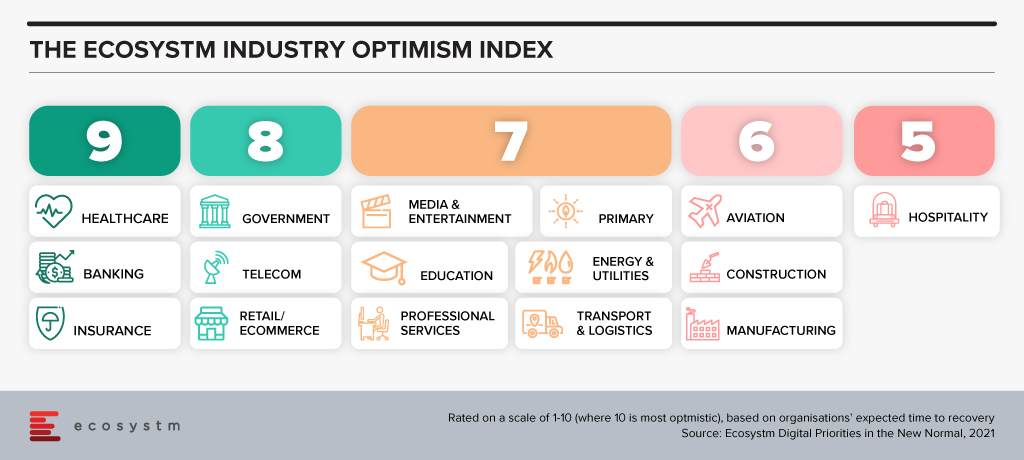
But these are not the only industries that are transforming. There are industries that have been impacted more than others. There are several instances of how organisations in these industries are demonstrating not only resilience but innovation. The Travel & Hospitality industry has had several such instances. As business models evolve the industry will see significant changes in digital channels to market, booking engines, corporate service offerings and others, as the overall Digital Strategy is overhauled.
Technologies are Evolving. Organisations depended on their tech partners to help them make the fast pivot required to survive and succeed in the last year – and tech companies have not disappointed. They have evolved their capabilities and continue to offer innovative solutions that can solve many of the ongoing business challenges that organisations face in their innovation journey. More and more technologies such as AI, machine learning, robotics, and digital twins are getting enmeshed together to offer better options for business growth, process efficiency and customer engagement. And the 5G rollouts will only accelerate that. The initial benefits being realized from early adoption of 5G has been for consumers. But there is a much bigger impact that is waiting to be realised as 5G empowers governments and businesses to make critical decisions at the edge.
Tech Start-ups are Flourishing. There are immense opportunities for technology start-ups to grow their market presence through innovative products and services. To succeed these companies need to have a strong investment roadmap; maintain a strong focus on customer engagement; and offer technology solutions that can fulfil the global needs of their customers. Technologies that promote efficiency and eliminate mundane tasks for humans are the need of the hour. However, as the reliance on technology-led transformation increases, tech vendors are becoming acutely aware that they cannot be best-in-class across the different technologies that an organisation will require to transform. Here is where having a robust partner ecosystem helps. Partnerships are bringing innovation to scale in Asia.
We can expect Asia to emerge as a powerhouse as businesses continue to innovate, embed technology in their product and service offerings – and as tech start-ups continue to support their innovation journeys.
Ecosystm CEO Amit Gupta gets face to face with Garrett Ilg, President Asia Pacific & Japan, Oracle to discuss the rise of the Asia Digital economies, the impact of the growing middle class on consumerism and the spirit of innovation across the region.

Fundamentally, any change has to be about people. And the Digital Value Journey that we are introducing in the upcoming CXO Digital Leaders Dialogue Series is no different.
The journey covers five stages of development involving five capabilities. Still, without the engagement of the people who will be affected by the change, you will not make progress.
And the situation gets even more complicated when external events impact your business. Ecosystm research unearths the impact of COVID-19: over 90% of respondents changed their planned Digital Transformation in some way (Figure 1). These changes will inevitably mean that the anticipated behaviour changes from their teams no longer apply. Getting the affected people re-engaged with the new initiatives will not be a simple task.
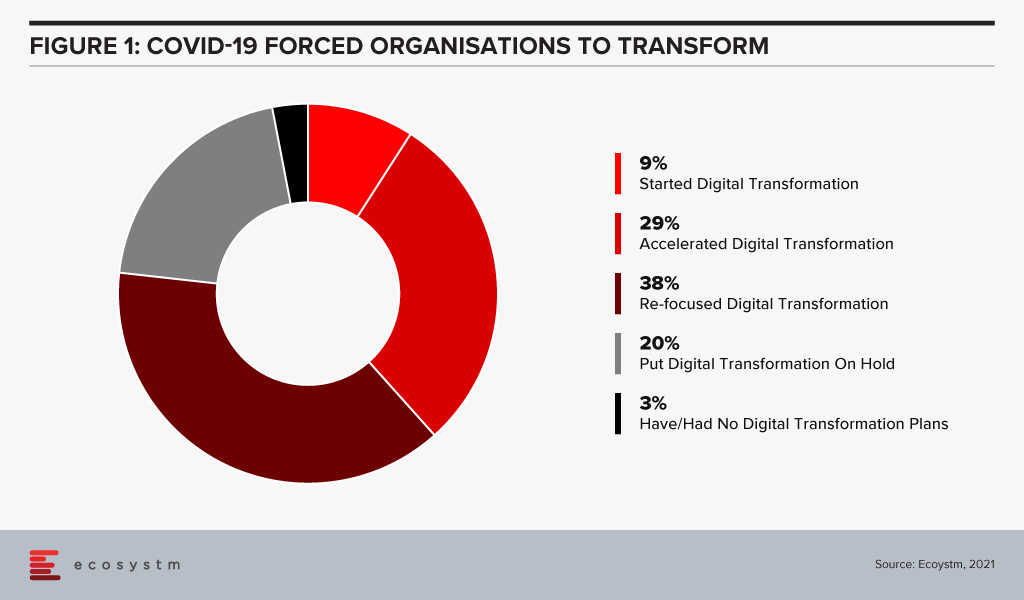
For example, when an organisation I worked at integrated an information-as-a-service capability, we found that our most experienced people did not use the new capability! They preferred to stick with their paper sources as they were very good at finding what they needed.
So nothing is achieved unless someone acts differently. We can change the technology, and we can change the process, but unless the people who need to change do change, we will waste everything else we do.
The scale of the change really doesn’t matter. If people are not in a mindset where they are looking to improve, we waste our time.
In the example I mentioned earlier, our store teams used catalogues to look up parts and equipment for customers. Our most experienced people were amazing – they knew which of the myriad of catalogues was going to give them the best part. We had not convinced them that the real-time system, which the supplier updated constantly, was better for them than the last paper version they had received.
So, on the Digital Value Journey, travellers need to remain very aware of the state of mind of the people whose behaviour they expect to change. Getting and keeping these people engaged is essential to the change.
People’s Resistance to Change
But why do people resist (or just plain ignore) change? How clear are you on what is in it for them?
Recent research on people’s motivation by psychologists such as Daniel Kahneman highlights that people fear loss much more than they look forward to success. To overcome this loss aversion, we need to help people understand why their lives will be better once we’ve completed the change and specifically address their concerns.
When we were looking at replacing the paper catalogues, we told the store teams that they would be able to quickly and easily search across all the catalogues available to them to give the customer the best deal. We didn’t consider that the ability to find the right part was a source of pride for some of the team. It was a skill that our experienced team members had developed over the years, and they felt we were devaluing their expertise.
We need to help those affected by the change recognise the purpose of the change and what is in it for them. If there is nothing, then why change?
And leaving people behind on the change journey is never going to lead to success. Their clear understanding of the purpose of the change is essential to getting the anticipated benefits.
I’ve seen change activities launch with a hiss and a roar, but as the pressure comes on during the delivery stages, communication and collaboration drop away. Listening carefully and responding authentically is a necessary part of the journey right through implementation until our teams have fully adopted the changes. A change doesn’t end at the implementation of a capability.
And that catalogue replacement? The delivery team kept listening to the store teams and made some great changes that were asked for. Some of the changes we didn’t understand, but the store teams were adamant. And the development paid for itself in less than six months through increased and better quality sales.
How do digital leaders shift from providing a cost-focused to a value-focused service? At the CXO Digital Leaders Dialogue series, together with Best Case Scenario, we will be in discussion with leaders who will share their experiences on navigating their digital journey.
To learn more, or to register to attend, visit here



